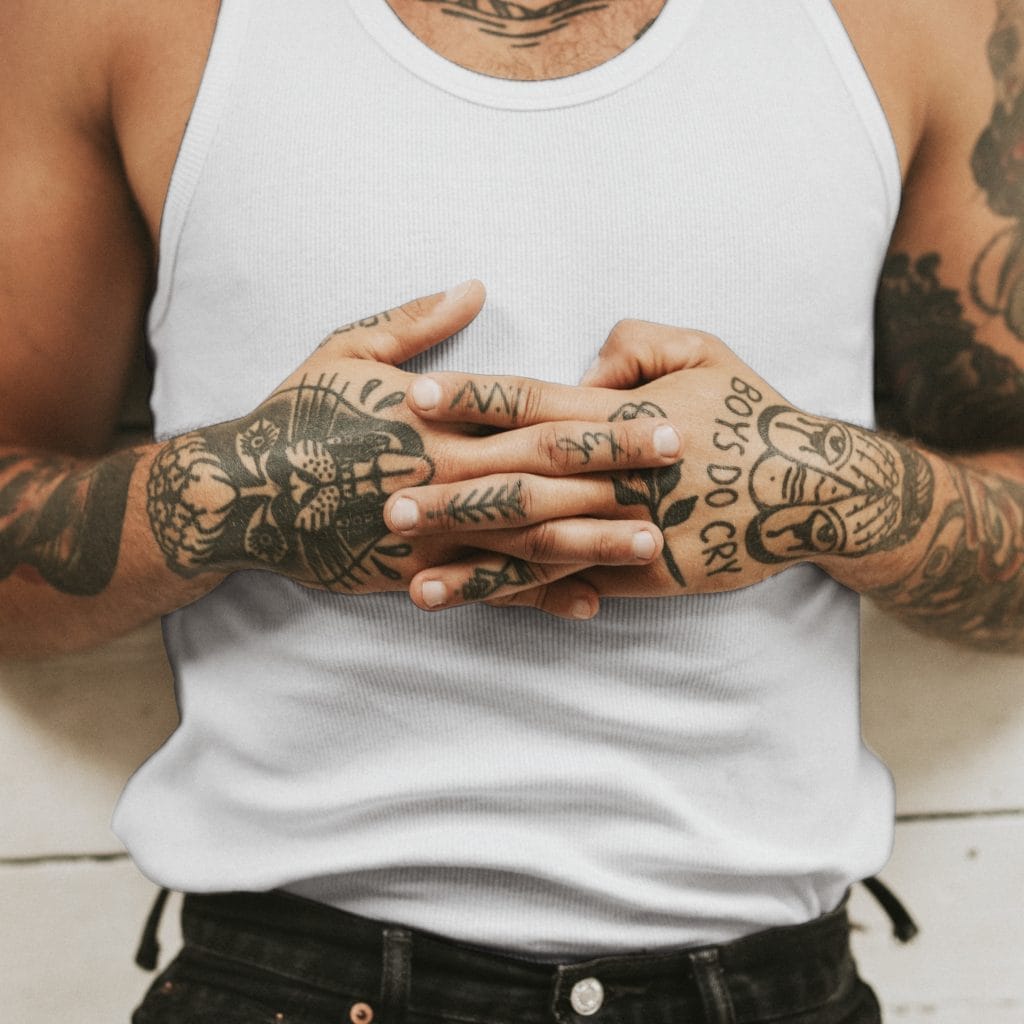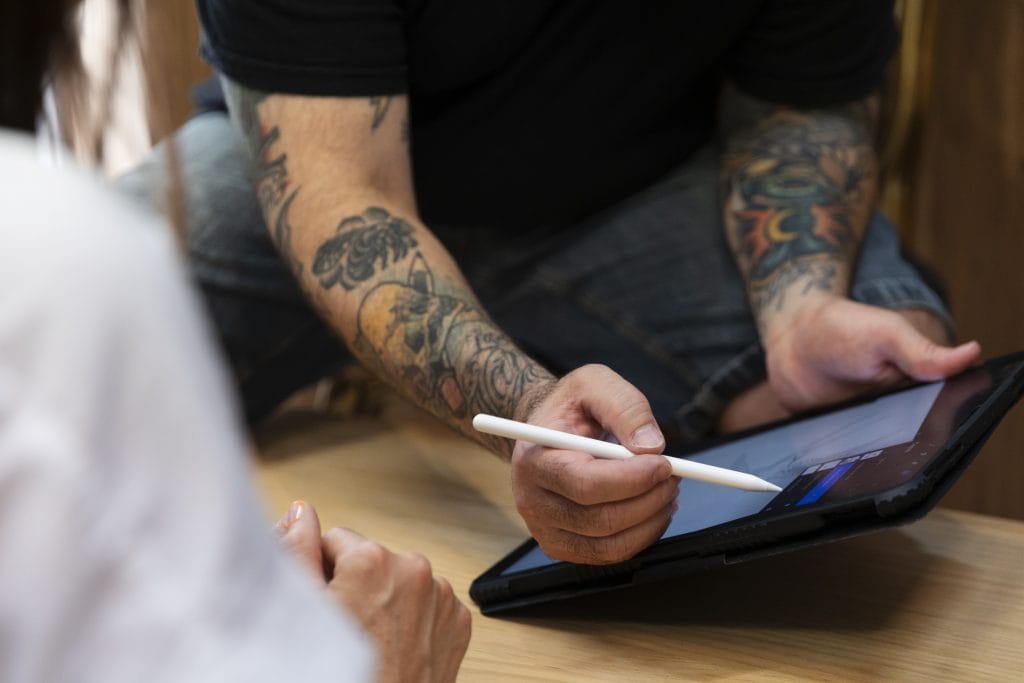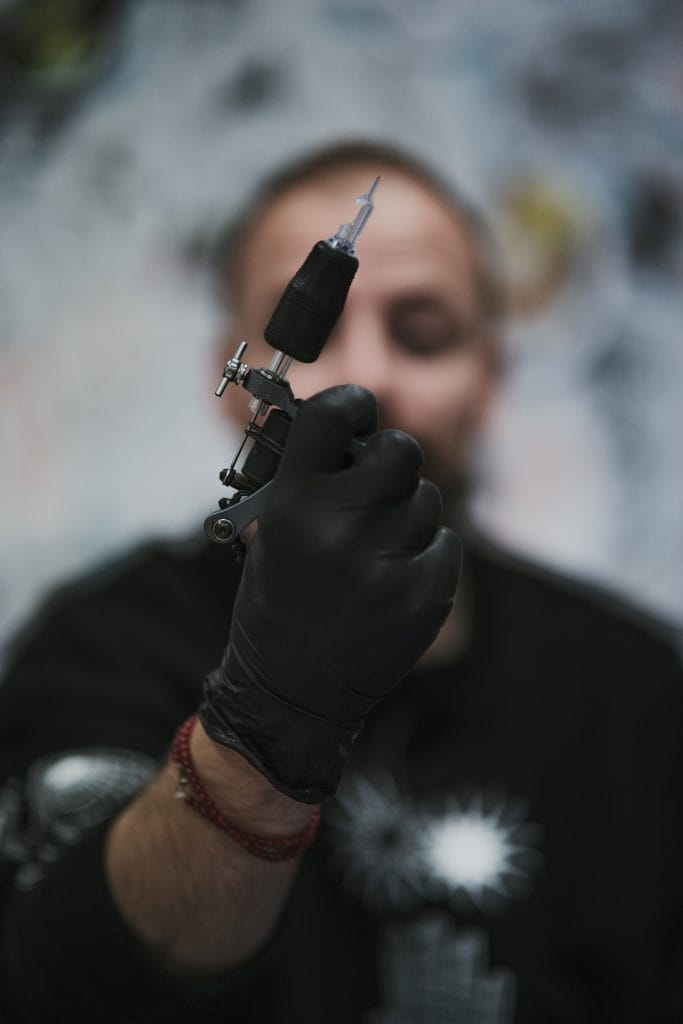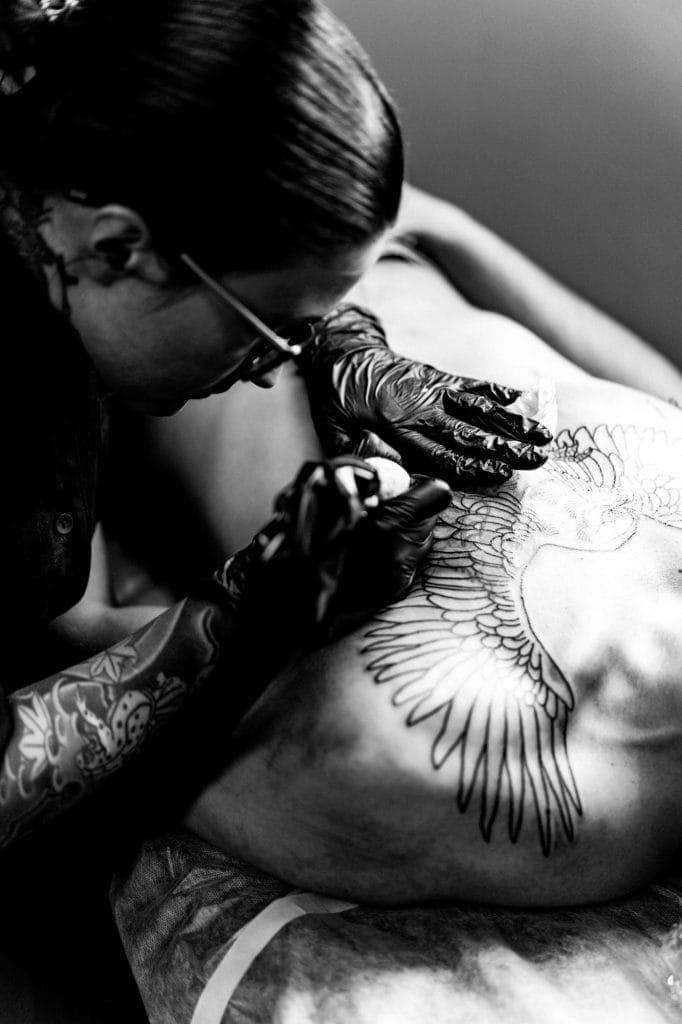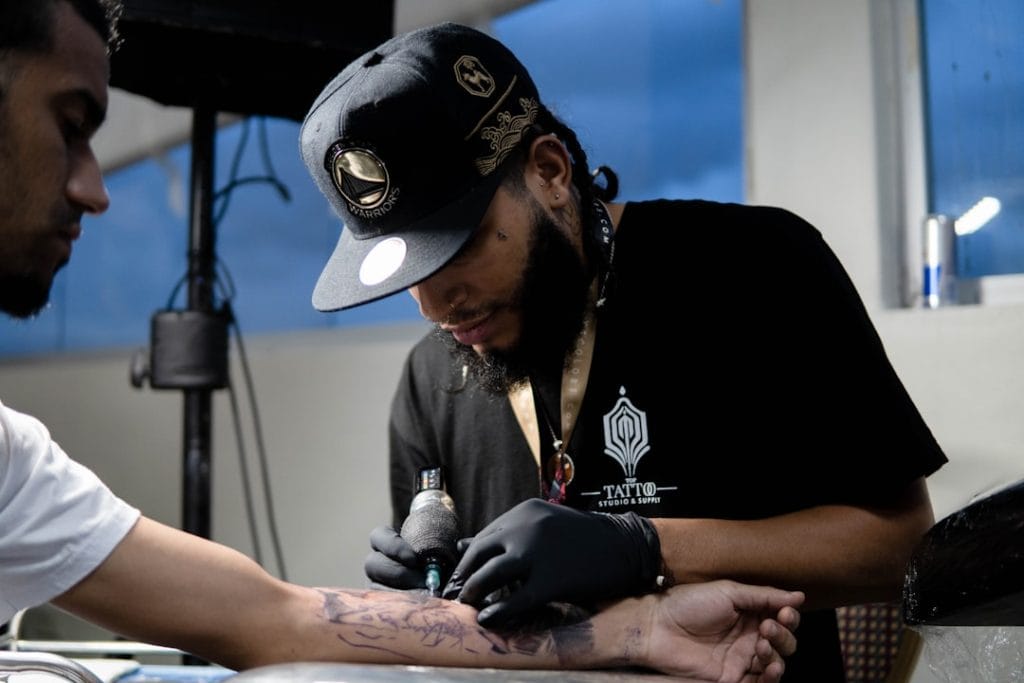Color packing is a fundamental technique in tattooing that involves the application of solid colors to create vibrant and visually striking designs. This process is essential for achieving the desired depth and intensity in a tattoo, allowing the artwork to stand out on the skin. Color packing requires a keen understanding of how different pigments interact with the skin and how they can be layered to achieve the desired effect.
Artists must consider factors such as skin tone, the type of ink used, and the overall design when planning their color packing approach. The technique itself involves filling in large areas of a tattoo with a consistent color, ensuring that there are no gaps or inconsistencies. This is particularly important for designs that rely on bold colors to convey their message or aesthetic.
A well-executed color packing job can enhance the overall appearance of a tattoo, making it look polished and professional. As such, mastering this technique is crucial for any tattoo artist looking to create high-quality work that resonates with clients.
Key Takeaways
- Understanding color packing is essential for achieving vibrant and long-lasting tattoos.
- Saturation plays a crucial role in the overall appearance and longevity of a tattoo.
- Traditional color packing techniques involve using multiple passes to build up color intensity.
- Modern color packing methods utilize advanced tattoo machines and techniques to achieve efficient and consistent saturation.
- Different saturation methods have their own pros and cons, and it’s important to consider them when choosing a technique.
Importance of Saturation in Tattooing
The Impact of Saturation on Tattoo Appearance
A well-saturated tattoo can draw attention and evoke emotions, while a poorly saturated one may appear dull and lifeless. Achieving the right level of saturation is not merely about applying more ink; it involves a nuanced understanding of color theory and skin interaction. Different skin types can absorb ink differently, which means that what looks vibrant on one person may not have the same effect on another.
Tailoring the Approach to Each Client
Therefore, artists must tailor their approach to each individual client, considering factors such as skin tone and texture. This personalized approach ensures that the final result is not only visually appealing but also enduring over time.
Achieving a Lasting Result
Traditional Color Packing Techniques
Traditional color packing techniques have been honed over decades, with many artists relying on time-tested methods to achieve their desired results. One common approach involves using a single needle or a small grouping of needles to apply ink in a series of overlapping strokes. This method allows for greater control over the saturation and ensures that the color is evenly distributed across the designated area.
Artists often use this technique for larger pieces, where consistency is key to maintaining the integrity of the design. Another traditional method involves layering colors to build depth and richness. By applying multiple layers of ink, artists can create a more dynamic appearance that adds dimension to the tattoo.
This technique requires patience and skill, as each layer must be allowed to heal before additional colors are added. The result is a tattoo that not only showcases vibrant colors but also exhibits a level of complexity that can elevate the overall design.
Modern Color Packing Methods
In recent years, modern color packing methods have emerged, incorporating advancements in technology and techniques that enhance the tattooing process. One such method is the use of rotary machines, which provide a smoother and more consistent application of ink compared to traditional coil machines. These machines allow artists to pack color more efficiently, reducing the time spent on each piece while maintaining high levels of saturation.
Additionally, modern artists often utilize specialized inks that are designed for better saturation and longevity. These inks are formulated to adhere more effectively to the skin, resulting in brighter colors that stand the test of time. The introduction of vegan and organic inks has also expanded options for artists and clients alike, allowing for a broader range of choices without compromising quality.
As technology continues to evolve, so too do the methods employed by tattoo artists, leading to increasingly sophisticated approaches to color packing.
Pros and Cons of Different Saturation Methods
When it comes to saturation methods in tattooing, each approach has its own set of advantages and disadvantages. Traditional techniques often provide a sense of authenticity and craftsmanship that many artists and clients appreciate. The tactile nature of hand-packing color can lead to unique variations in saturation that add character to each piece.
However, these methods can be time-consuming and may require more touch-ups over time as the ink settles into the skin. On the other hand, modern saturation methods offer efficiency and consistency that can be appealing for both artists and clients. The use of advanced machines and high-quality inks can result in tattoos that are vibrant from the outset and require less maintenance in the long run.
However, some purists argue that these methods may lack the personal touch and artistry associated with traditional techniques. Ultimately, the choice between different saturation methods often comes down to personal preference and the specific goals of each tattoo project.
Tips for Achieving Perfect Saturation
Achieving perfect saturation in color packing requires a combination of skill, technique, and an understanding of individual client needs. One key tip is to start with a solid foundation by ensuring that the skin is properly prepared before beginning the tattooing process. This includes cleaning the area thoroughly and using a stencil that accurately represents the design.
A well-prepared canvas allows for better ink absorption and can lead to more vibrant results. Another important consideration is the choice of needle configuration. Different needle groupings can produce varying effects when it comes to saturation.
For instance, using larger needle groupings can help cover larger areas more quickly, while smaller groupings may be better suited for detailed work. Additionally, artists should pay attention to their technique, ensuring that they maintain consistent pressure and speed throughout the process. This attention to detail can make all the difference in achieving an even and saturated finish.
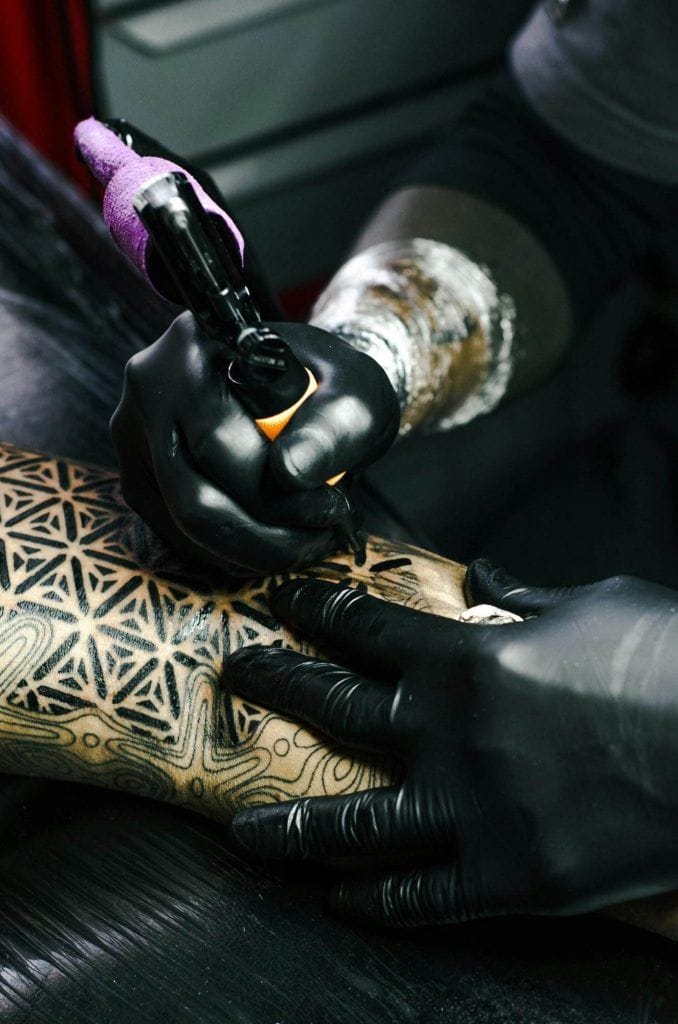
Common Mistakes to Avoid in Color Packing
While color packing may seem straightforward, there are several common mistakes that artists should be aware of to avoid compromising their work. One frequent error is overworking an area, which can lead to excessive trauma on the skin and result in uneven saturation. It’s essential for artists to find a balance between packing enough color while being mindful of the skin’s health.
Another mistake is neglecting to consider skin type when planning color packing techniques. Different skin tones can affect how colors appear once healed; therefore, artists should test colors on a small area before committing to larger sections. Additionally, failing to layer colors properly can lead to dullness or inconsistency in saturation.
By being aware of these pitfalls and taking proactive measures, artists can enhance their color packing skills and produce stunning tattoos.
The Future of Color Packing in Tattooing
As tattooing continues to evolve, so too will the techniques used for color packing. The future may see even more advancements in ink technology, with formulations designed specifically for improved saturation and longevity. Innovations such as biodegradable inks or those infused with healing properties could revolutionize how tattoos are applied and maintained.
Moreover, as artists become increasingly aware of individual client needs and preferences, personalized approaches to color packing will likely gain prominence. This could involve tailored consultations where artists assess skin type, lifestyle factors, and personal aesthetics before determining the best approach for each client’s tattoo journey. As these trends develop, color packing will remain an essential aspect of tattoo artistry, continually adapting to meet the demands of both artists and clients alike.
